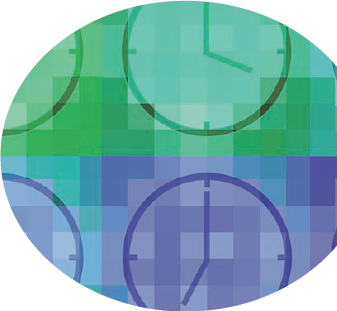Chapter 1. Working with the Flash Timeline
In This Chapter
Understanding the Timeline
Creating frames and keyframes
Editing frames
When you create a Flash document, the default settings give a Timeline with one keyframe, which is great if you're creating something static. But Flash is all about motion and animation, so 1-frame Timelines just don't cut the mustard. The Timeline determines what happens during the course of your Flash movie. Keyframes on Timelines are places where things change, because if something didn't change, it wouldn't be Flash. When you create animations, you use the Timeline to designate where action starts and stops. In this chapter, we present a timely treatise on keyframes, frames, and Timelines. And the Timeline signifies that it's time to stop the intro and start writing.

Getting to Know the Timeline
Someone told us that it's all happening on the Timeline. We do believe it. We do believe it's true. In Flash, the Timeline is used to arrange content over time. You can put forks in the road, known as keyframes, where things happen. The document frame rate determines how the action on each frame occurs. The default document frame rate of 12 frames per second (fps) means that you need 12 frames for each second of action and that each frame is 1/12 of a second. And, we computed all that without the aid of a calculator or an abacus.
Each layer has its own Timeline. Each ...
Get Flash CS4 All-in-One For Dummies® now with the O’Reilly learning platform.
O’Reilly members experience books, live events, courses curated by job role, and more from O’Reilly and nearly 200 top publishers.

